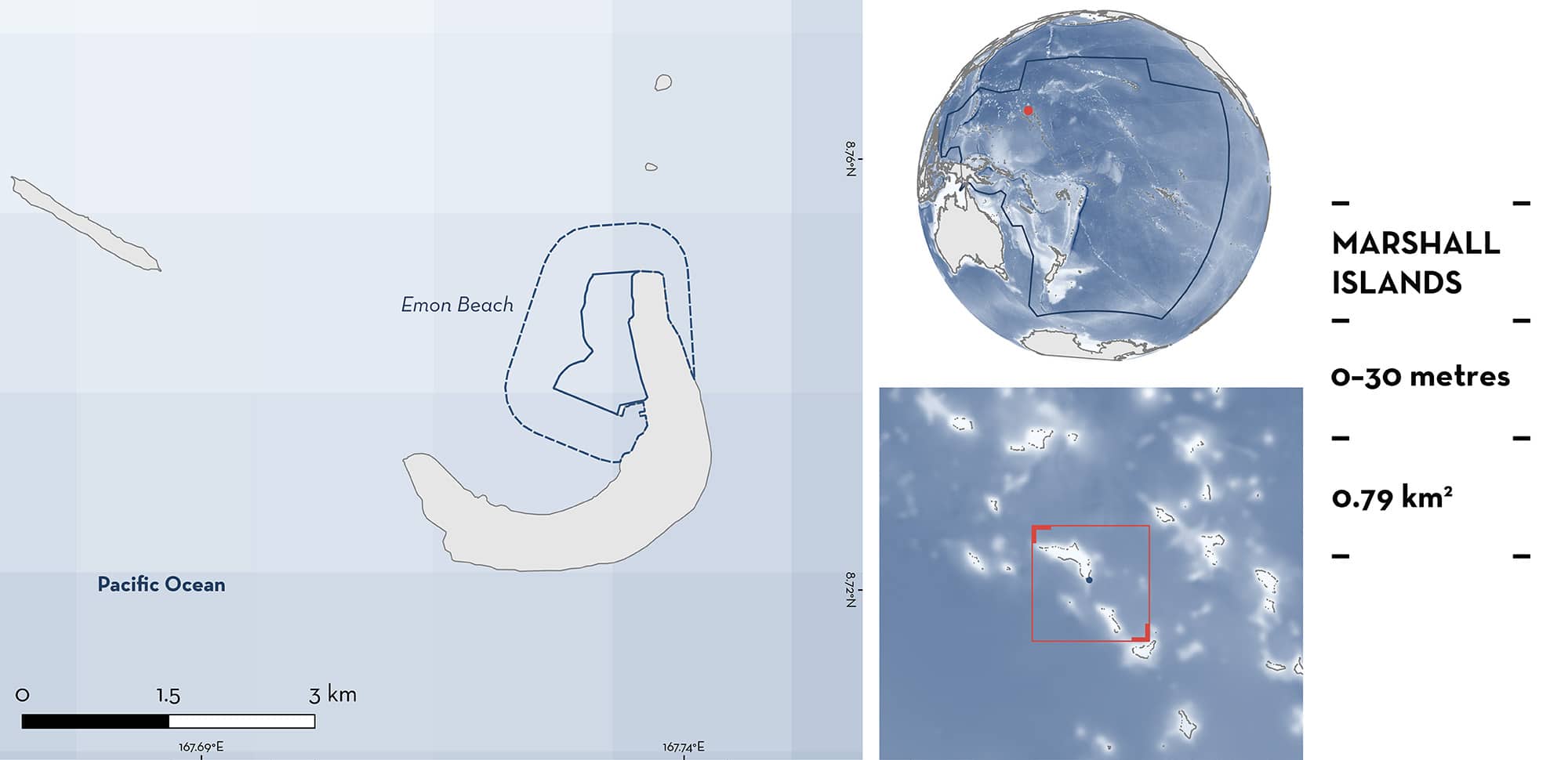ISRA FACTSHEETS
ISRA FACTSHEETS
NEW ZEALAND & PACIFIC ISLANDS REGION
Emon Beach
Summary
Emon Beach is situated at the southern end of Kwajalein Atoll in the Marshall Islands. Kwajalein Atoll is the largest atoll on earth and contains nearly one hundred coral islets. The area falls within the lagoon of the atoll, on the southeast side. The area has a cleaning station characterised by scattered coral heads and sandy substrates. Within this area there are: threatened species and undefined aggregations (Reef Manta Ray Mobula alfredi).
Download factsheet
Emon Beach
DESCRIPTION OF HABITAT
Emon Beach is situated at the southern end of Kwajalein Atoll in the Marshall Islands. Kwajalein Atoll is the largest atoll on earth and contains nearly one hundred coral islets (Dvorak et al. 2018). The area falls within the lagoon of the atoll, on the southeast side. Within the area there is a cleaning station off Emon Beach, characterised by scattered coral heads and sandy substrates. The Marshall Islands are in line with the Equatorial Countercurrent and between the two westward-flowing Equatorial Currents (de Laubenfels 1950). Consequently, the surface currents flow eastward, directly intersecting the trade winds.
This Important Shark and Ray Area is benthic and pelagic and is delineated from inshore and surface waters (0 m) to 30 m based on the bathymetry of the area.
CRITERION A
VULNERABILITY
One Qualifying Species considered threatened with extinction according to the IUCN Red List of Threatened Species regularly occurs in the area. This is the Vulnerable Reef Manta Ray (Marshall et al. 2022).
CRITERION C
SUB-CRITERION C51 – UNDEFINED AGGREGATIONS
Emon Beach is an important area for undefined aggregations of one ray species.
Between 2013–2017, Reef Manta Rays were regularly observed aggregating in Emon Beach (J Huwe pers. obs. 2024). Opportunistic snorkelling surveys have confirmed 50 sightings of Reef Manta Rays during this five-year period and identified 15 different individuals using photo identification (Huwe 2018). Most observations are of Reef Manta Rays attending the cleaning station in the area off Emon Beach, with an average of 1–2 animals observed at a time. Occasional sightings of Reef Manta Rays are observed outside this area, however, this is the only location around Kwajalein Atoll where this species is observed regularly and predictably. There is not enough information to determine seasonality of the species use of the area, however, anecdotal information suggests that there are more sightings in November (J Hartup pers. obs. 2024).
Download factsheet
SUBMIT A REQUEST
ISRA SPATIAL LAYER REQUEST
To make a request to download the ISRA Layer in either a GIS compatible Shapefile (.shp) or Google Earth compatible Keyhole Markup Language Zipped file (.kmz) please complete the following form. We will review your request and send the download details to you. We will endeavor to send you the requested files as soon as we can. However, please note that this is not an automated process, and before requests are responded to, they undergo internal review and authorization. As such, requests normally take 5–10 working days to process.
Should you have questions about the data or process, please do not hesitate to contact us.


